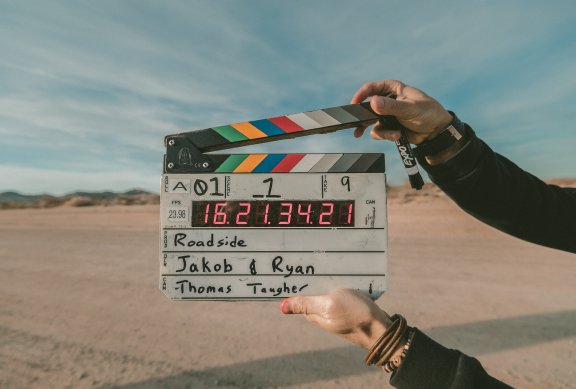Fun Facts and Trivia About Commonly Used (Mostly Behind-The-Scenes) Movie and TV Terms

When watching our favorite newer movies and TV shows, many of us might wonder about the terms used when producers and directors are making these favorite forms of entertainment. For example, we might be inside a theater, perhaps streaming something on a smaller screen, and we often see trailers at the beginning of these presentations. But why is it called a "trailer" when it's shown at the beginning of a presentation?
Let's find out how some common movie and TV terms came into practice and the history behind these popular phrases and words. We'll start off with the really loud director's "cut" command, other words, and terms we're accustomed to seeing and hearing associated with movies and TV shows.
Why Do Directors Yell "Cut!" Instead of Stop or Something Else?
We've all seen examples of when a director shouts out cut! (or, cut... cut... cut!) when they're disappointed in a scene or a particular performance they didn't find satisfactory from an actor. Perhaps it's simply the end of a scene or when filming should simply stop according to the script. First, the yelling is so that everyone on set will hear the command and stop whatever they are doing.
This includes not only the actors but also those filming, boom operators, audio technicians, and others to stop what they're doing and pay attention to further direction. It also helps to avoid unnecessary further delays or expenses without this type of loud guidance. It's also said to be associated with when the film will need to be sliced, edited, or otherwise "cut" during the post-production period.
What's That Clicky Thingy Called That's Used Between Takes and Scenes?
The short answer to this question it's known as a clackerboard in the industry and from a behind-the-scenes perspective, many of us have seen and heard this tool used in the production of both TV shows and movies. Obviously, it's used as a tracking method, and we hear the holder of this device announces, "scene X, take Y, and perhaps a brief description of what's happening during that particular portion of filming.
As an added bonus, those with an eagle eye may have noticed how much clackerboards have evolved over the many years of filming and cinematography. For example, they started off as simple black-and-white boards marked with chalk that required extra work in notes and other supportive data with assistance from other crew members to track the progress of the project. Nowadays, thanks to today's modern technology, they're brighter and more efficient with digital displays that precisely time events in filming, tie into audio notes, with less work necessary in the long run.
Why Are They Called Trailers When Shown at the Beginning of a Feature?
The explanation for this term is actually interesting as it has also evolved over time, and it's something explained by cinematic historians. Back in the olden days of airing movies in theaters, there were trailers in the actual sense in the word with cartoons, updates about what was happening overseas during wartime, and other forms of content shown after the feature presentation.
Eventually, they evolved to television with cliffhangers and multiple episodes in a series and the trailer showed parts and sneak peeks of what was coming up next. For example, these trailers may have conveyed something like, "be sure to stay tuned for the next episode," to see if a character would survive or what might be in store for the storyline in the future. Further in their evolution, they became teasers for coming attractions but somehow kept the name trailer instead of a more preemptive title like a preview.
Why is it Called a Pilot Episode?
The simple answer is that perhaps producers and backers of a certain project might be looking to see if a series will sink or swim, fly or flop, hence the term pilot episode. However, it's meant to be more of a model, prototype, or flight plan for setting the current tone of a show and how it will progress in the future. Another explanation ties to the term "pilot project" much in the same light as what was highlighted previously. Still another answer includes preliminary research from audiences before the series is launched (or set to take off) to find out if it appeals to these viewers an whether or not it might be successful.
Remember, when you have questions, we have answers. Whether they're fun facts or trivia from the past, queries about modern technology, we have the information you're seeking. If you don't find what you're looking for on or website or blog, please feel free to contact us directly today. We're always looking forward to hearing from you.
